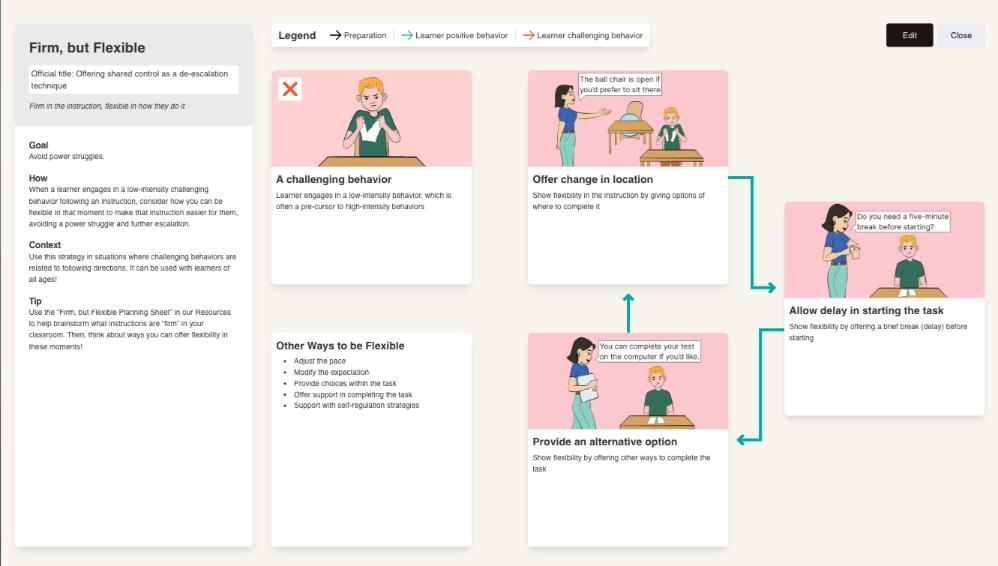
Firm, but Flexible
Shared-Control De-Escalation to Prevent Power Struggles in the Classroom
Firm, but Flexible balances clear, non-negotiable directions (“firm”) with learner choice in how to comply (“flexible”). By offering options—seat choice, materials, pacing—after giving an instruction, BCBAs, special-education teachers, and parents keep tasks moving while diffusing low-level refusals and nurturing autonomy. The result: fewer stand-offs and smoother learning for autistic, ADHD, and neurotypical students alike.
Why use Firm, but Flexible?
- Fewer refusals and escape behaviors. Research on shared-control strategies shows notable drops in task avoidance when learners can choose the way they comply rather than whether they comply.
- Higher on-task engagement. Giving structured choices boosts intrinsic motivation and time on task without sacrificing instructional goals.
- Stronger teacher–learner rapport. Respectful flexibility lowers stress for both parties, fostering trust and reducing the likelihood of future escalations.
What you’ll unlock inside BIP Visualized:
- A step-by-step overview of how to use this evidence-based strategy
- Ability to customize images and descriptions to individualize for your learner
- Aligning, printable visual resources to support teaching and generalization
- Ability to add this visual strategy and more to build a custom-made visual BIP tailored to your learner’s needs
Start your free trial to access the Firm, but Flexible strategy and build a personalized, team-friendly visual Behavior Intervention Plan today.
